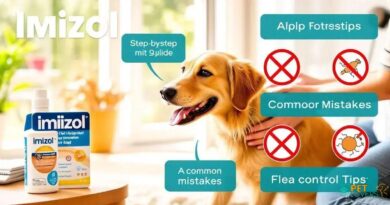What is: Bloat symptoms in dogs
What is Bloat in Dogs?
Bloat, also known as gastric dilatation-volvulus (GDV), is a serious condition that affects dogs, particularly large and deep-chested breeds. It occurs when the stomach fills with gas, food, or fluid, causing it to expand. In severe cases, the stomach can twist on itself, leading to a life-threatening situation. Understanding the symptoms of bloat is crucial for dog owners to ensure timely veterinary intervention.
Recognizing the Symptoms of Bloat
The symptoms of bloat in dogs can vary, but some of the most common signs include a distended abdomen that appears swollen or tight. A dog experiencing bloat may also exhibit signs of discomfort, such as pacing, restlessness, or an inability to find a comfortable position. Additionally, excessive drooling and attempts to vomit without producing any material are key indicators that something is wrong.
Behavioral Changes in Dogs with Bloat
Dogs suffering from bloat may display noticeable behavioral changes. They might become unusually anxious or agitated, seeking out their owners for comfort. You may also notice your dog trying to lie down and then getting back up repeatedly, which can be a sign of distress. These behavioral symptoms can be critical in identifying bloat early on.
Physical Signs to Look For
In addition to a swollen abdomen, other physical signs of bloat include a rapid heartbeat and pale gums. If you notice your dog’s breathing is labored or they are panting excessively, these could also be signs of bloat. It’s essential to monitor your dog closely for these symptoms, especially if they have a history of bloat or are at risk due to their breed.
The Importance of Immediate Veterinary Care
If you suspect your dog is experiencing bloat, it is vital to seek veterinary care immediately. Bloat can progress rapidly, and the longer it goes untreated, the greater the risk of severe complications, including shock or death. A veterinarian will typically perform an examination and may require imaging tests to confirm the diagnosis and determine the best course of action.
Preventing Bloat in Dogs
While not all cases of bloat can be prevented, there are several strategies that dog owners can employ to reduce the risk. Feeding smaller, more frequent meals instead of one large meal can help minimize the chances of bloat. Additionally, avoiding vigorous exercise immediately before and after meals is crucial. Keeping your dog calm during feeding times can also be beneficial.
Understanding the Risk Factors
Certain breeds are more predisposed to bloat, including Great Danes, Doberman Pinschers, and Boxers. Age, family history, and even the shape of a dog’s chest can influence their risk. Being aware of these factors can help owners take proactive measures to protect their pets from this dangerous condition.
Emergency Response to Bloat Symptoms
If you observe any symptoms of bloat, it is essential to act quickly. Do not attempt to treat the condition at home; instead, transport your dog to the nearest veterinary clinic. Time is of the essence, and prompt medical attention can make a significant difference in the outcome for your dog.
Post-Treatment Care for Dogs with Bloat
After treatment for bloat, whether surgical or non-surgical, your dog will require careful monitoring and follow-up care. Your veterinarian may recommend dietary changes and gradual reintroduction of food. It’s also important to watch for any recurring symptoms and maintain regular veterinary check-ups to ensure your dog’s health and well-being.
Conclusion on Bloat Symptoms in Dogs
Understanding the symptoms of bloat in dogs is crucial for any pet owner. By being aware of the signs and knowing how to respond, you can help ensure your furry friend receives the care they need in a timely manner. Always consult with your veterinarian for personalized advice and information regarding your dog’s health.



